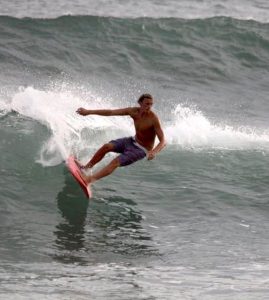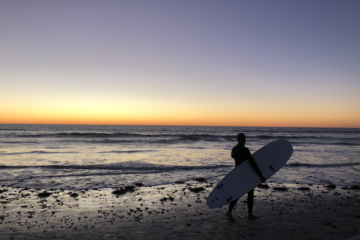The Impact of Machine-Made Surfboards
Scott Clausen is a student at USC who shapes boards in his spare time. He believes that machine-shaped boards are changing surf culture and are less desirable than a custom-shaped board. Even though machine-made and manufactured boards have become popular, hand-crafted boards will always have an important place in surfing and surf culture.

Scott Clausen
Clausen, who frequently surfs at El Porto, focuses on shaping alaias, which are wooden boards with no fins. These boards “go really fast and you can spin,” he says. Sometimes shaping boards can be harmful to the environment because “traditional polyurethane boards are made of fiberglass and laminations.” These materials cause air pollution and create hazardous waste. Breathing fiberglass and laminations can result in skin, eyes and lung irritation. Companies that mass-produce surfboards are creating new technologies to avoid this.
Jason O’Brien, a friend of Clausen who also shapes alaias, says machine-made boards are becoming more popular because they are cheaper. “Every board has its own personality and its own unique feel unless it’s machine-made, ” he says. Machine-made boards take the fun out of surfing because it is the exact replica of hundreds of other boards out there. “The board isn’t unique to you because other people can surf that board.” In that way it takes away from the culture and experience of buying a new board.
Alex Merrill, who lives in El Porto, sees surfers who use hand-crafted boards, but are most likely not custom boards. “When surfers have brand stickers on their board and they surf well, it usually means they are sponsored,” he says. “Sponsored surfers most likely have custom boards. You’re not going to buy a custom shaped board for yourself unless you’re very invested in the sport of surfing and willing to spend upwards of $1,500.” This is why many amateur surfers buy manufactured boards.


